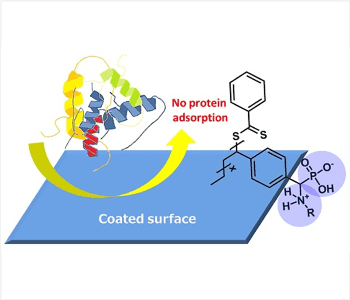 Fouling is a process of adsorption of different microorganisms, plants, animals or algae on surfaces which gained enormous attention in last decades. The process has essentially negative impacts on applications such as ship coatings, water purification systems and various medical devices, where adhesion of such biospecies reduces either the lifetime of use or increases maintenance costs. Many different methods have been investigated to prevent fouling. However, alternatives like tin-based paints which were used in the past are environmentally toxic and affect ecological systems of oceans.
Fouling is a process of adsorption of different microorganisms, plants, animals or algae on surfaces which gained enormous attention in last decades. The process has essentially negative impacts on applications such as ship coatings, water purification systems and various medical devices, where adhesion of such biospecies reduces either the lifetime of use or increases maintenance costs. Many different methods have been investigated to prevent fouling. However, alternatives like tin-based paints which were used in the past are environmentally toxic and affect ecological systems of oceans.
Zwitterionic polymer coatings can serve as a promising new class of anti-fouling materials. Researcher from the University of Hamburg introduced novel surface functionalization routes employing hybrid polymers for the preparation of zwitterionic coatings. Zwitterionic polymers are known to possess two very distinguishing properties: 1) anti-fouling properties and 2) stealth properties in media such as blood. Polymers incorporating zwitterionic moieties, for example, phosphorylcholine and carboxybetaine are excellent candidates for the creation of anti-fouling surfaces due to their anionic and cationic terminal groups, which form a strong hydration layer as an effect of the solvation of the charged groups. This kind of surface hydration is considered the key to the resistance of such coatings to nonspecific biofilm formation.
In the present study, zwitterionic moieties were generated on the poly(methylsilsesquioxane)-poly(4-vinyl-benzaldehyde) (PMSSQ-PStCHO) modified SiO2 surfaces based on a surface Kabachnik-Fields reaction (sur-KFR) to install polymeric α-aminophosphonates. The subsequent deprotection of phosphonate groups resulted in zwitterionic-functionalized polymer substrates exhibiting a low protein adsorption in PBS buffer and reduced adhesion properties against S. epidermidis cells.

















